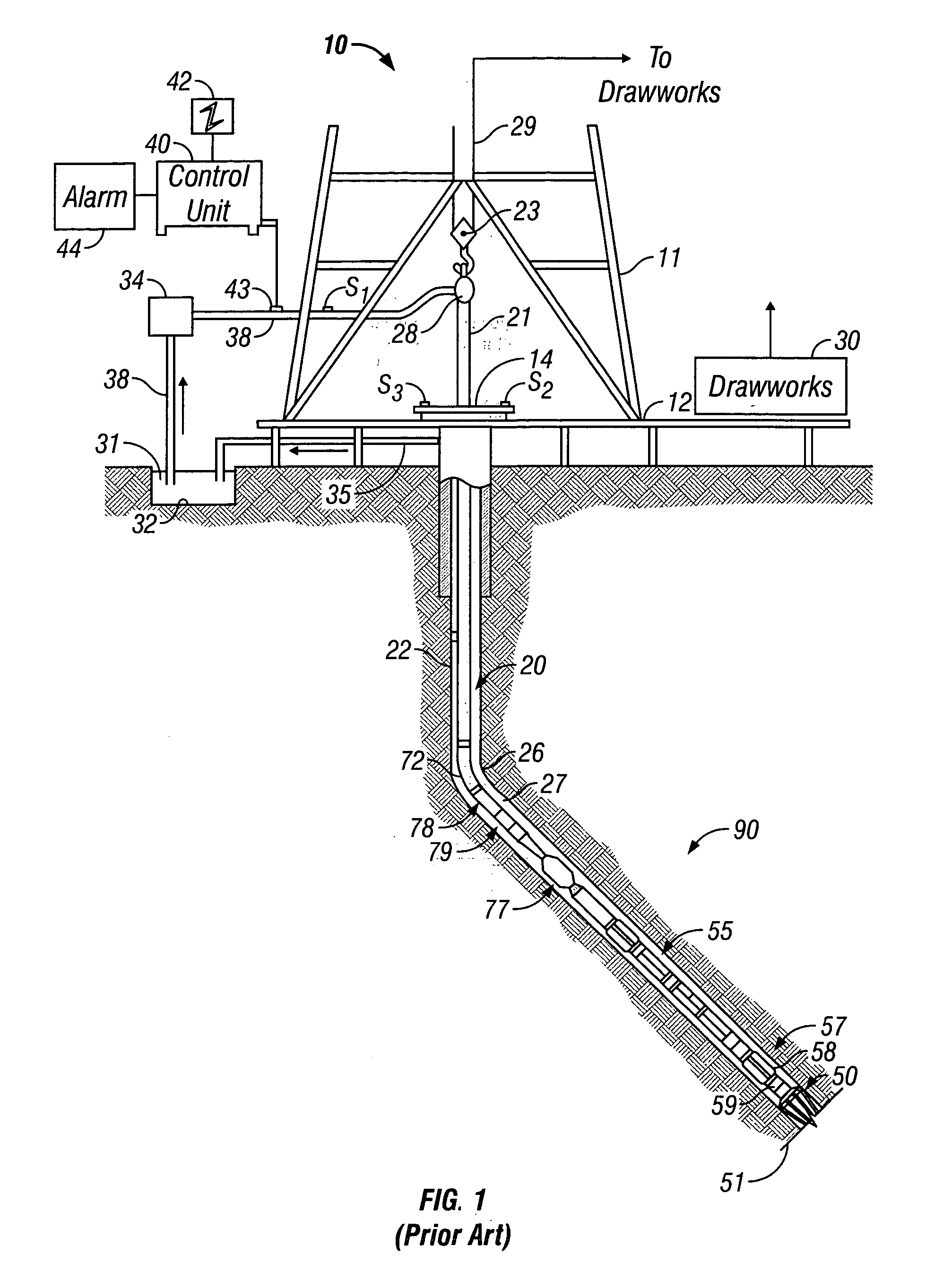Real time processing of multicomponent induction tool data in highly deviated and horizontal wells
a multi-component induction tool and data processing technology, applied in the field of real-time processing of multi-component induction tool data in highly deviated and horizontal wells, can solve the problems of underestimating the productivity of hydrocarbons present in laminated hydrocarbons, inferences about conductivity from induction voltage measurement errors, etc., to speed up computation and improve convergence.
- Summary
- Abstract
- Description
- Claims
- Application Information
AI Technical Summary
Benefits of technology
Problems solved by technology
Method used
Image
Examples
Embodiment Construction
The method of the present invention can be used in, among others, wireline and measurement-while-drilling (MWD) devices. A typical wireline electromagnetic device is shown generally, for example, in U.S. Pat. No. 6,348,792 B1, issued to Beard, et al. An MWD device suitable for use with the present invention is described generally below. Items of particular importance to wireline and MWD devices will be pointed out where appropriate.
FIG. 1 shows a schematic diagram of a drilling system 10 with a drillstring 20 carrying a drilling assembly 90 (also referred to as the bottom hole assembly, or “BHA”) conveyed in a “wellbore” or “borehole”26 for drilling the wellbore. The drilling system 10 includes a conventional derrick 11 erected on a floor 12 which supports a rotary table 14 that is rotated by a prime mover such as an electric motor (not shown) at a desired rotational speed. The drillstring 20 includes a tubing such as a drill pipe 22 or a coiled-tubing extending downward from the ...
PUM
 Login to view more
Login to view more Abstract
Description
Claims
Application Information
 Login to view more
Login to view more - R&D Engineer
- R&D Manager
- IP Professional
- Industry Leading Data Capabilities
- Powerful AI technology
- Patent DNA Extraction
Browse by: Latest US Patents, China's latest patents, Technical Efficacy Thesaurus, Application Domain, Technology Topic.
© 2024 PatSnap. All rights reserved.Legal|Privacy policy|Modern Slavery Act Transparency Statement|Sitemap



